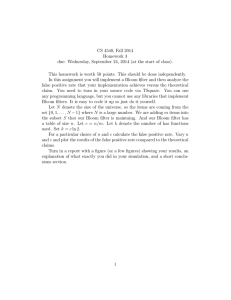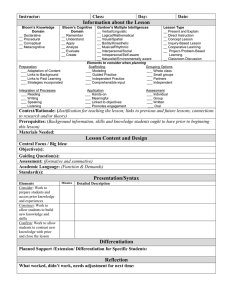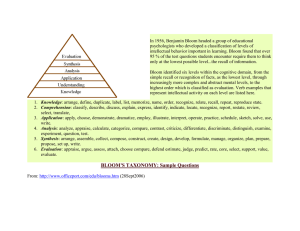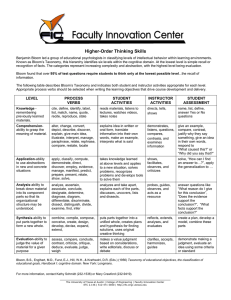Hash, Don’t Cache: Fast Packet Forwarding for Enterprise Edge Routers Minlan Yu
advertisement
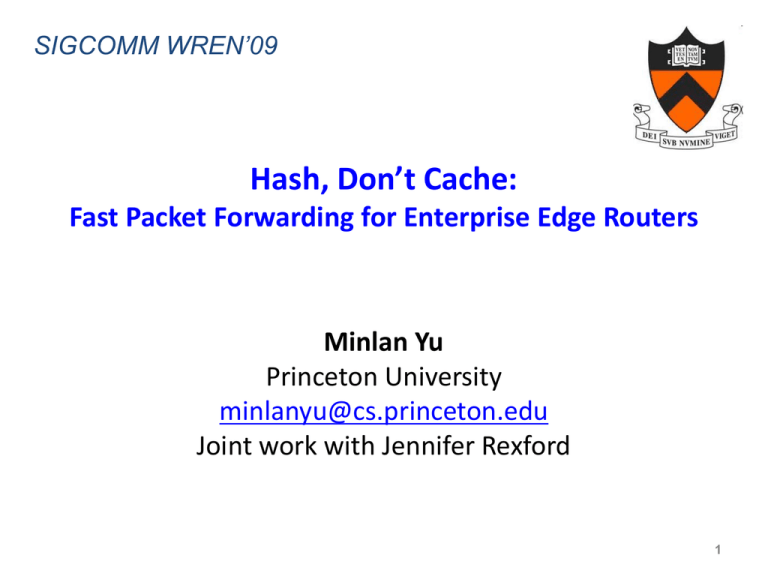
SIGCOMM WREN’09 Hash, Don’t Cache: Fast Packet Forwarding for Enterprise Edge Routers Minlan Yu Princeton University minlanyu@cs.princeton.edu Joint work with Jennifer Rexford 1 Enterprise Edge Router • Enterprise edge routers – Connects upstream providers and internal routers • A few outgoing links – A small data structure for each next hop Provider 1 Provider 2 Enterprise Network 2 Challenges of Packet Forwarding • Full routes forwarding table (FIB) – For load balancing, fault tolerance, etc. – More than 250K entries, and growing • Increasing link speed – Over 10 Gbps • Requires large, expensive memory – Expensive, complicated high-end routers • More cost-efficient, less power-hungry solution? – Perform fast packet forwarding in a small SRAM 3 Using a Small SRAM • Route caching is not a viable solution – Store the most frequently used entries in cache – Bad performance during cache miss • Low throughput and high packet loss – Bad performance under worst-case workloads • Malicious traffic with a wide range of destinations • Route changes, link failures • Our solution should be workload independent – Fit the entire FIB in the small SRAM 4 Bloom Filter • Bloom filters in fast memory (SRAM) – A compact data structure for a set of elements – Calculate s hash functions to store element x – Easy to check membership – Reduce memory at the expense of false positives x Vm-1 V0 0 0 0 1 0 0 0 1 0 1 h1(x) h2(x) h3(x) 0 1 0 0 0 hs(x) Bloom Filter Forwarding • One Bloom filter (BF) per next hop – Store all addresses forwarded to that next hop • Consider flat addresses in the talk – See paper for extensions to longest prefix match Bloom Filters query Packet destination Nexthop 1 Nexthop 2 hit …… Nexthop T T is small for enterprise edge routers 6 Contributions • Make efficient use of limited fast memory – Formulate and solve optimization problem to minimize false-positive rate • Handle false positives – Leverage properties of enterprise edge routers • Adapt Bloom filters for routing changes – Leverage counting Bloom filter in slow memory – Dynamically adjust Bloom filter size 7 Outline • Optimize memory usage • Handle false positives • Handle routing dynamics 8 Outline • Optimize memory usage • Handle false positives • Handle routing dynamics 9 Memory Usage Optimization • Consider fixed forwarding table • Goal: Minimize overall false-positive rate – Probability one or more BFs have a false positive • Input: – Fast memory size M – Number of destinations per next hop – The maximum number of hash functions • Output: the size of each Bloom filter – Larger BF for next-hops with more destinations 10 Constraints and Solution • Constraints – Memory constraint • Sum of all BF sizes fast memory size M – Bound on number of hash functions • To bound CPU calculation time • Bloom filters share the same hash functions • Proved to be a convex optimization problem – An optimal solution exists – Solved by IPOPT (Interior Point OPTimizer) 11 Evaluation of False Positives Overall False Positives [fraction] – The FIB with 200K entries, 10 next hop – 8 hash functions – Takes at most 50 msec to solve the optimization 1.00E+00 1.00E-01 1.00E-02 1.00E-03 1.00E-04 1.00E-05 1.00E-06 0 200 400 600 Memory size (KB) 800 1000 12 Outline • Optimize memory usage • Handle false positives • Handle routing dynamics 13 False Positive Detection • Multiple matches in the Bloom filters – One of the matches is correct – The others are caused by false positives Bloom Filters query Packet destination Multiple hits Nexthop 1 Nexthop 2 …… Nexthop T 14 Handle False Positives on Fast Path • Leverage multi-homed enterprise edge router • Send to a random matching next hop – Packets can get to the destination even through a lesspreferred outgoing link occasionally – No extra traffic, but may cause packet loss • Send duplicate packets – Send copy of packet to all matching next hops – Guarantees reachability, but introduce extra traffic 15 Prevent Future False Positives • For a packet that experiences a false positive – Conventional lookup in the background – Cache the result • For the subsequent packets – No longer experience false positives • Compared to conventional route cache – Much smaller (only for false-positive destinations) – Not easily invalidated by an adversary 16 Outline • Optimize memory usage • Handle false positives • Handle routing dynamics 17 Problem of Bloom Filters • Routing changes – Add/delete entries in BFs • Problem of Bloom Filters (BF) – Do not allow deleting an element • Counting Bloom Filters (CBF) – Use a counter instead of a bit in the array – CBFs can handle adding/deleting elements – But, require more memory than BFs 18 Update on Routing Change • Use CBF in slow memory – Assist BF to handle forwarding-table updates – Easy to add/delete a forwarding-table entry CBF in slow memory 2 0 1 0 0 0 Delete a route 3 0 2 0 0 0 0 0 2 0 1 0 1 0 0 0 0 0 1 0 BF in fast memory 1 0 1 0 0 0 19 Occasionally Resize BF • Under significant routing changes – Number of addresses in BFs changes significantly – Re-optimize BF sizes • Use CBF to assist resizing BF – Large CBF and small BF – Easy to expand BF size by contracting CBF CBF 0 0 1 1 0 0 0 3 0 Easy to contract CBF to size 4 BF 0 Hard to expand to size 4 0 0 1 0 20 BF-based Router Architecture 21 Prototype and Evaluation • Prototype in kernel-level Click • Experiment environment – 3.0 GHz 64-bit Intel Xeon – 2 MB L2 data cache, used as fast memory size M • Forwarding table – 10 next hops, 200K entries • Peak forwarding rate – 365 Kpps for 64 Byte packets – 10% faster than conventional lookup 22 Conclusion • Improve packet forwarding for enterprise edge routers – Use Bloom filters to represent forwarding table • Only require a small SRAM – Optimize usage of a fixed small memory • Multiple ways to handle false positives – Leverage properties of enterprise edge routers • React quickly to FIB updates – Leverage Counting Bloom Filter in slow memory 23 Ongoing Work: BUFFALO • Bloom filter forwarding in large enterprise – Deploy BF-based switches in the entire network – Forward all the packets on the fast path • Gracefully handling false positives – Randomly select a matching next hop – Techniques to avoid loops and bound path stretch www.cs.princeton.edu/~minlanyu/writeup/conext09.pdf 24 Thanks • Questions? 25
